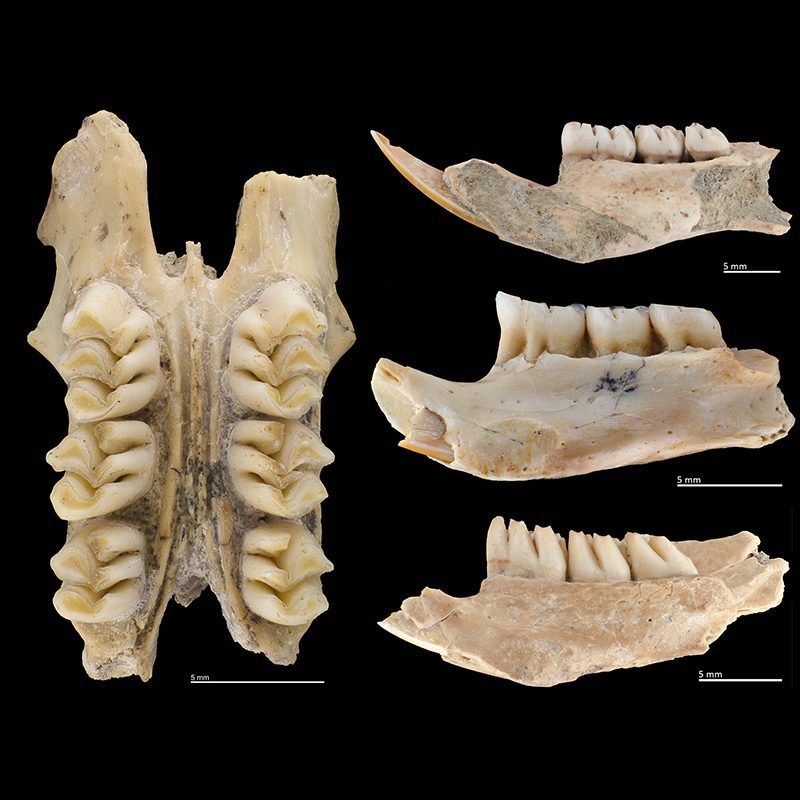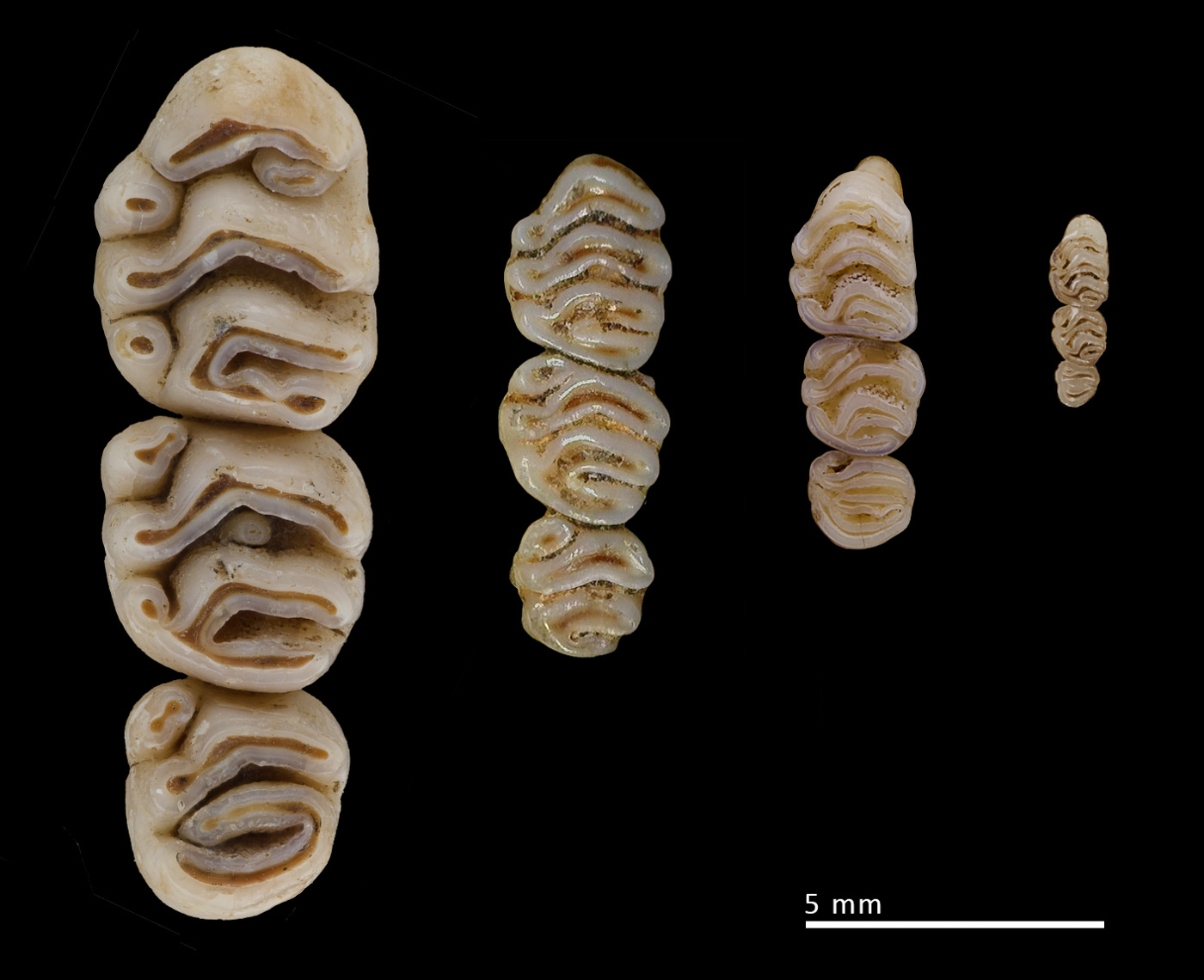SUMMARY
This is AI generated summarization, which may have errors. For context, always refer to the full article.

An international team of scientists has discovered three different species of cloud rats unique to the Philippines in Cagayan. The discovery was published recently at the Journal of Mammalogy.
These cloud rats were found to have lived at the same time as Homo luzonensis, the ancient human species that lived in the country about 67,000 years ago. Scientists believe that they are extinct.
The giant cloud rats, or buot or bugkon in the vernacular, lived in trees. They fed on leaves, buds, and seeds. They were also known to have furry or fluffy tails and striking fur color.
Interestingly, scientists have named these fossil cloud rats using local terms from Philippine languages.
For instance, the largest of the fossil cloud rat is Carpomys dakal, as it is much larger compared to the known living species in the same genus. Dakal means big or large in many northern Luzon languages, including the Agta, Ibanag, and Itawes languages.
The second fossil species, Cratermys ballik, is slightly smaller than the living Crateromys species in Luzon. Ballik stands for small in the Dupaningan Agta language.
Meanwhile, the third species, Batomys cagayanensis, is named after the place where the archaeological sites are located, the Cagayan region of northeastern Luzon.

Digging deeper to discovery
Scientists have discovered the fossil species from Callao Cave, and several adjacent smaller caves in Peñablanca, Cagayan. In fact, some specimens of all three of the new fossil rats occurred in the same deep layer in the cave where Homo luzonensis was discovered.
One of the fossil cloud rats is known from only two specimens from that ancient layer. However, the other two are represented by specimens from about 67,000 years ago (when the Homo luzonensis was estimated to have lived) all the way up to about 2,000 years ago or later. This means that these species were resilient and persistent for tens of thousands of years.
“Our records demonstrate that these giant rodents were able to survive the profound climatic changes from the Ice Age to current humid tropics that have impacted the earth over tens of millennia. The question is what might have caused their final extinction?” said Philip Piper, a co-author based at the Australian National University.
The last recorded occurrence of two of the species was around 2,000 years ago, or shortly after. This might offer clues as to how these animals became extinct as agricultural societies and the introduction of animals like domestic dogs, pigs, and macaque monkeys to the Philippines occurred around that time.
“While we can’t say for certain, but this implies that humans likely played some role in their extinction,” said Armand Mijares from the University of Philippines, who led the excavations at Callao Cave.
Raising awareness
The recent discovery is nothing short of remarkable. These fluffy fellows who once lived alongside ancient humans are a proof of the tremendous biodiversity and endemism of Philippine fauna, said Janine Ochoa, University of the Philippines Diliman assistant professor of anthropology and lead author of the study.
“We previously did not know that such cloud rats species existed in the past,” Ochoa told Rappler in an email.
Currently, there are 18 known giant cloud rat species in the Philippines.
“This study, coming from a relatively small sample of fossil material, adds an additional three species to this tally, and so it shows that the diversity of this distinctive endemic Philippine radiation was at least 17% higher in the recent past,” said Ochoa.
The description of the two giant cloud rats (Carpomys dakal and Crateromys ballik) increases the tally of known extinct and living giant rodents in Luzon to five species – one Carpomys, two Crateromys, and two Phloeomys.
A few years ago, a 15-year study concluded that the island of Luzon has the greatest number of unique mammals in the world.
The recent discovery also revealed important information about the past environments and past ecology of human populations that lived in the Philippines.
“We were looking at the fossil assemblages associated with that hominin (Homo luzonensis), and we found teeth and fragments of bone that ended up belonging to these new species of cloud rats,” Ochoa said in a statement.
These fossil fragments were then added to those from the National Museum of the Philippines collection, some of which were excavated decades ago in the 1970s and 1980s. Surprisingly, with only 50 fragments of mostly teeth, their team was able to identify three new cloud rat species.
“Normally, when we’re looking at fossil assemblages, we’re dealing with thousands and thousands of fragments before you find something rare and really nice,” Ochoa said. “It’s crazy that in these fifty fragments, we found three new species that haven’t been recorded before.”

“This new publication is a rare study of its kind also for small mammal fauna of the Philippines. This paper is an important contribution to understanding the deep history of animal communities and also of human communities in the country,” she said.
Ochoa added, “Hopefully, with greater awareness of this, we take better steps to take care of our forests and of these native animals.”
The Philippines’ ancient biodiversity
Lawrence Heaney, Negaunee Curator of Mammals at the Field Museum of Natural History in Chicago, USA, also said the discovery of these fossil cloud rats is an affirmation of the faunal diversity in the Philippines.
“Our previous studies have demonstrated that the Philippines has the greatest concentration of unique species of mammals of any country, most of which are small animals, less than 200 grams, that live in the tropical forest,” Heaney said in a statement.
He added: “These recently extinct fossil species not only show that biodiversity was even greater in the very recent past, but that the two that became extinct just a few thousand years ago were giants among rodents, both weighing about a kilogram. They were big enough that it might have been worthwhile to hunt and eat them.”
Prior to this discovery, there had been virtually no information about fossils of smaller-sized mammals in the Philippines, Ochoa said.
She also said that smaller-sized mammals like these fossil cloud rats were understudied “probably because researchers were focused on open-air sites where the large fossil mammal faunas were known to have been preserved, rather than the careful sieving of cave deposits that preserve a broader size-range of vertebrates including the teeth and bones of rodents.”
A number of extinct mammals were discovered in Luzon, including two types of elephants, a species of rhinoceros, a giant hog, and relatives of the living dwarf water buffalo called the tamaraw.
“Our discoveries suggest that future studies that look specifically for fossils of small mammals may be very productive, and may tell us a great deal about how environmental changes and human activities have impacted the really exceptionally distinctive biodiversity of the Philippines,” said Ochoa.
These types of studies may also reveal about the impact of overhunting on biodiversity, added Heaney.
“This is something we need to understand if we are going to be effective in preventing extinction in the future.” – Rappler.com
Add a comment
How does this make you feel?




There are no comments yet. Add your comment to start the conversation.